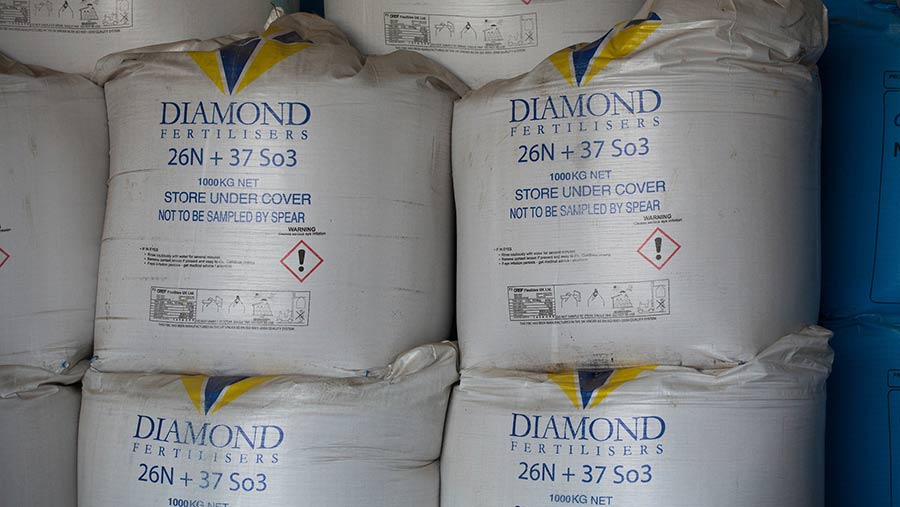Ag inflation soars on fertiliser, feed and energy cost rises
 © Tim Scrivener
© Tim Scrivener
Dramatic increases in fertiliser and energy costs have continued forcing up on-farm inflation during 2022.
The latest figures from Defra and consultant Andersons show how significant this increase has been and how it is affecting farm businesses.
Defra’s price index for agricultural inputs in the 12 months to June increased by 33.1%. This increase was driven by the rising costs of fertiliser, feed and energy, according to Defra.
See also: Farm input inflation more than double rate of output rises
Agricultural outputs also rose during the same time period, according to the price index, but at a slower rate.
In the 12 months to June, outputs increased by 24.9% on the previous year, with much of this increase linked to rising milk, wheat, and oilseed rape prices.
Freya Shuttleworth, dairy and livestock analyst at the AHDB, said fertiliser prices in June were 154% higher than year-earlier levels and were up by 31% for the year to date.
“We anticipate the cost of fertilisers to rise again as domestic supplies tighten following the CF Industries announcement that they will ‘temporarily halt’ production of ammonia at their Billingham site,” said Ms Shuttleworth.
“While the company has stated fertiliser production will continue, using imports, there is limited availability of ammonia across Europe as capacity is reduced, which will add to the cost and push up prices,” she added.
Energy costs and feed costs in June had increased by 44% and 19% respectively compared to the start of the year, according to the AHDB.
Ms Shuttleworth said: “Despite the relatively slower rate of price increases for feedstuffs, higher purchases over the winter, bolstered by potential forage shortages, will keep farm margins pressured.”
Agflation
Andersons’ most recent “Agflation” estimates in July totalled 23.5% a year. This outweighs the consumer price index which stood at 10.1% during the same month.
The firm’s “Agflation” index is calculated using Defra’s price indices for each agricultural input and weighting them against the overall spend on each of these inputs by UK farmers.
Andersons’ index for agricultural outputs in July also stood at 10.1%, which is less than half the rate of “Agflation”.
The report, co-written by Michael Haverty and Richard King, states that divergence between agricultural output prices and “Agflation” has widened in recent months, and there is a cost of farming squeeze taking place.
“While recent falls in commodity grain prices have been the main driver, it also suggests that consumers are struggling to afford rising food prices and that retailers and food-service providers are reluctant to pass on further increases,” states the report.
Rising energy prices will also continue to affect “Agflation” in terms of fuel, fertiliser, and feed costs. They will remain at elevated levels for this year and beyond, according to Andersons.
